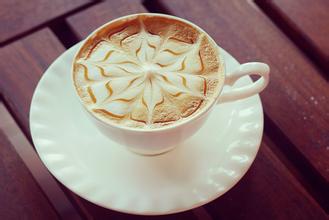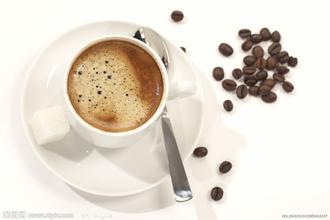Introduction to the flavor and taste of Arabica seed manor of small seed coffee
Arabica is deeply loved by Chinese people with a short history of coffee contact because of its strong fruity aroma. it was introduced to China by missionaries in the 19th century and widely planted in Panzhihua, Sichuan, and the dry-hot valley of the Jinsha River above 1000 meters in western Yunnan. The sunshine in this area lasts for a long time and there is a great temperature difference between day and night. The local people solve the problem of insufficient seasonal rainfall by diverting water up the mountain, resulting in a unique aroma of "Chinese coffee". Among them, Banpo coffee grown in Arabica in Panzhihua, Sichuan is the most. Compared with Yunnan and Hainan, Panzhihua in the dry-hot valley has longer sunshine, higher altitude, greater temperature difference, good light quality and more virgin land. it is a rare and most suitable area for growing Arabica coffee. Banpo coffee farmers take advantage of this advantage to adopt unique planting and processing technology: first, "do not land on the ground": from collecting coffee beans to processing into finished products, coffee has been kept free from soil and other sundries to ensure its taste and quality; second, "graded collection": since coffee beans are not uniform and mature, coffee beans of the same level are collected centrally rather than mixed together. Such as manual operation, the use of a large number of labor force to collect, classify and process. The coffee here is rich in aroma, bitter and sour, and fruity, very popular with consumers and favored by foreign coffee beverage giants. Jamaica Blue Mountain is an excellent quality coffee; Tibica coffee is native to Ethiopia and southeastern Sudan. It is the most widely cultivated variety of coffee in the Western Hemisphere. Kona and Blue Mountain Coffee, which are high-yielding in Hawaii, are neck and neck in quality and only $1 to $3 in price.
The bourbon species was introduced to America by French immigrants in the 18th century from the island of Island of Bourbon (today's French island of Reunion Island of Reunion, located in the Indian Ocean east of Madagascar). It is now widely cultivated in the Western Hemisphere, such as Brazil, and a small amount in Yunnan, China. The caffeine content of Bobang subspecies is 20% to 30% higher than that of Tibica subspecies, but less than most coffee subspecies. At first, the main branch and the trunk grew upward at 45 degrees, and drooped with the fruit load. The lateral branches and nodes are dense and knot.
There are many fruits and high yield, but the berries are smaller and mature faster, so they are not resistant to strong wind and heavy rain. Bourbon coffee is a variety of small-grain coffee second only to Tibica, with more fruit, higher yield, but smaller berries and slower ripening. The small-grain coffee grown in Yunnan, China is mainly Tibika and Bobang subspecies. From the botanical point of view of coffee, Yunnan small-grain coffee is genetically similar to the recognized best Blue Mountains of Jamaica (Jamaica Blue Mountain) and Kona of Hawaii. Arabica coffee accounts for 70% of 80% of all coffee production, and its excellent flavor and aroma make it the only one of all original coffee species.
A coffee that can be drunk directly. However, its resistance to dryness, frost, diseases and insect pests is too low, especially the natural enemy of coffee-leaf rust, so all producing countries are committed to variety improvement.
It turned out that all the commercial coffee in the world was small-grain coffee, but it was only at the end of the 19th century that growers began to look for other disease-resistant varieties because of the collapse of a large number of coffee farms caused by leaf rust.
Small-grain coffee is still the most important coffee variety, accounting for about 3% of the world's total coffee production. It is mainly grown in Latin American countries, but also partly in Indonesia and the Pacific islands. The geographical and climatic conditions of Brazil, the largest coffee producer in the world, are very suitable for the growth of small-grain coffee, and the main coffee varieties planted are also small-grain coffee. Brazil's coffee production accounts for more than 1% of the world's total output.
The fruit of small-grain coffee is smaller than that of medium-grain coffee and large-grain coffee. The berries are oval and generally contain two seeds, the so-called "coffee beans".
Subspecies
The three earliest subspecies in the Arabica species (Coffea arabica) series of small seed coffee are: blue Mountain subspecies (varietal Blue
Coffee flower
Coffee flower
Mountain), varietal Typica and varietal Bourbon)

Important Notice :
前街咖啡 FrontStreet Coffee has moved to new addredd:
FrontStreet Coffee Address: 315,Donghua East Road,GuangZhou
Tel:020 38364473
- Prev

Taste of Manning Coffee Manor in Sumatra
The gentleman in coffee-Sumatra Manning Mantenin is a fine coffee bean growing in the plateau and mountain area at an altitude of 750-1500 meters, implying a kind of tenacity and a great spirit that can be taken up and put down. It represents a kind of masculinity, drink with a kind of happy dripping, wanton, gallop scenery, this taste makes men fascinated. Life is full of Manning.
- Next

Sumatra coffee bean flavor taste Manor introduction Rasuna Wahana Manor
Sumatra coffee bean grading We often hear about premium mantelin, but at the same time, mantelin coffee green bean quality is unsightly. In fact, coffee in Sumatra is graded more systematically. As for why the old beans in Mantenin are golden yellow, it is because the coffee transit station Medan is very humid (more than 80% moisture). If you store it for six months,
Related
- Does Rose Summer choose Blue, Green or Red? Detailed explanation of Rose Summer Coffee plots and Classification in Panamanian Jade Manor
- What is the difference between the origin, producing area, processing plant, cooperative and manor of coffee beans?
- How fine does the espresso powder fit? how to grind the espresso?
- Sca coffee roasting degree color card coffee roasting degree 8 roasting color values what do you mean?
- The practice of lattes: how to make lattes at home
- Introduction to Indonesian Fine Coffee beans-- Java Coffee producing area of Indonesian Arabica Coffee
- How much will the flavor of light and medium roasted rose summer be expressed? What baking level is rose summer suitable for?
- Introduction to the characteristics of washing, sun-drying or wet-planing coffee commonly used in Mantenin, Indonesia
- Price characteristics of Arabica Coffee Bean Starbucks introduction to Manning Coffee Bean Taste producing area Variety Manor
- What is the authentic Yega flavor? What are the flavor characteristics of the really excellent Yejasuffi coffee beans?

